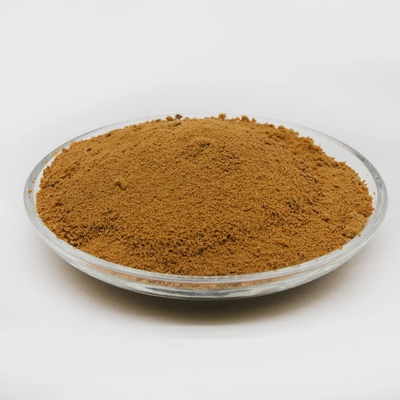Polyaluminum Chloride Brown Granules
The fundamental difference between polyaluminum chloride and traditional inorganic coagulants is that traditional inorganic coagulants are low-molecular crystalline salts, while the structure of polyaluminum chloride is composed of polyvalent carboxyl complexes with variable shapes, and the flocculation and precipitation speed Fast, suitable for a wide range of PH, no corrosion to pipeline equipment, and obvious water purification effect. Can effectively remove colored SS, COD, BOD and heavy metal ions such as arsenic and mercury in water. This product is widely used in drinking water, industrial water and sewage treatment. site.

Polyaluminum chloride generally has three colors: white, yellow, and brown. The application and production process of different colors of polyaluminum chloride are also very different. Polyaluminum chloride with an alumina content of 27% to 30% within the national standard range is mostly khaki, to yellow or light yellow solid powder. These types of PACs have better water solubility. During the dissolution process, accompanied by physical and chemical changes such as electrochemical, coagulation, adsorption, and precipitation, the flocs form fast, coarse, high activity, fast precipitation, and high turbidity water resistance. The purification effect is obvious.
White polyaluminum chloride is called high-purity iron-free white polyaluminum chloride, or food-grade white polyaluminum chloride. Compared with other polyaluminum chlorides, it is the highest quality product. The main raw material is high-quality hydroxide Aluminum powder and hydrochloric acid are produced using the most advanced spray drying method in China. White polyaluminum chloride is used in many fields such as paper-making sizing agent, sugar decolorization clarifying agent, leather tanning, medicine, cosmetics, precision casting and water treatment.
The raw materials of yellow polyaluminum chloride are calcium aluminate powder, hydrochloric acid and bauxite, which are mainly used for sewage treatment and drinking water treatment. The drinking water treatment raw materials are aluminum hydroxide powder, hydrochloric acid and a small amount of aluminum-calcium powder, and the process adopted is the plate and frame filter press process or spray drying process. For the treatment of drinking water, the country has strict requirements on heavy metals, so both raw materials and production processes are superior to brown polyaluminum chloride. Yellow polyaluminum chloride is generally produced by drum drying or spray tower drying, and its solid form is granular or powdery.
The raw materials of brown polyaluminum chloride are calcium aluminate powder, hydrochloric acid, bauxite and iron powder. The production process adopts the drum drying method, which is generally used for sewage treatment. The color is brown because iron powder is added to it. The more iron powder added, the darker the color. If the iron powder exceeds a certain amount, it is sometimes called polyaluminum ferric chloride, which has an excellent effect in sewage treatment.
 |
 |
 |
 |
Precautions
① In operation, the water purification process of polyaluminum chloride is generally divided into three stages. These three stages are coagulation stage, flocculation stage and sedimentation stage. In the coagulation stage, when the liquid medicine is injected into the coagulation container and the raw water is rapidly coagulated, fine alum flowers will be formed in a very short time. At this time, the water body becomes more turbid, which requires the water flow to generate intense turbulence. Then polyaluminium chloride enters the flocculation stage. The flocculation stage is the process of growing and thickening the alum flowers, which requires an appropriate degree of turbulence and sufficient residence time (10-15 minutes). In the later stage, a large number of alum flowers can be observed to gather and sink slowly. Forms a surface clear layer. When the flocculant is in the settling stage, it is a floc settling process carried out in the settling tank, which requires slow water flow. In order to improve the efficiency, an inclined tube or plate settler is generally used, and a large number of thick alum flowers are blocked by the inclined tube (plate) wall. While depositing at the bottom of the pool, the upper layer of water is clarified water, and the remaining alum flowers with small particle size and low density continue to collide with each other while slowly descending, and the residual turbidity basically remains unchanged in the later stage.
② Polyaluminum chloride must be stored in a dry, moisture-proof, and heat-proof place (be sure not to damage the package at <80°C, and the product can be stored for a long time).
③ Polyaluminum chloride products must be dissolved before they can be used, and corrosion-resistant materials should be used for dissolution equipment and dosing facilities.
④ The effective storage period of liquid products of polyaluminum chloride is half a year, and the effective storage period of solid products is two years. The solid products can still be used after being damp.




